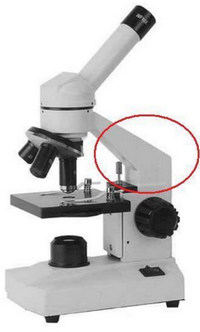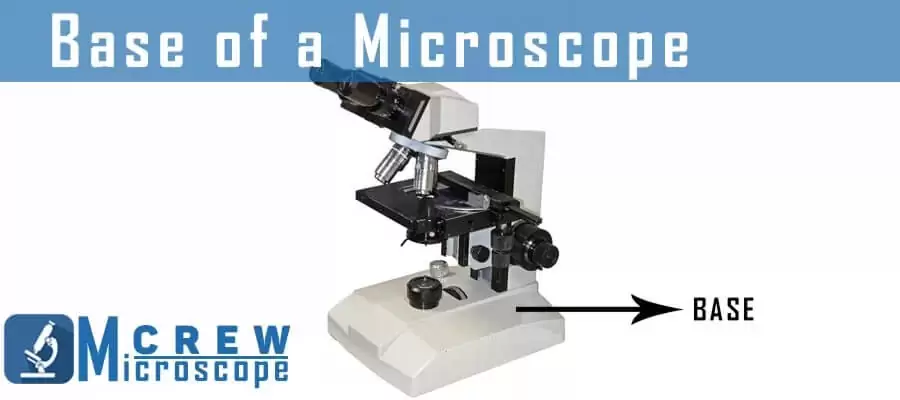Cells Unit Test Study Guide
1/40
There's no tags or description
Looks like no tags are added yet.
Name | Mastery | Learn | Test | Matching | Spaced |
|---|
No study sessions yet.
41 Terms
Arm (Microscope)
The side of the microscope used to support it when carried.

Base (Microscope)
The bottom part of the microscope.

Body (Microscope)
Connects the eyepiece to the objectives.
Course Adjustment Knob (Microscope)
Moves the stage up and down to help get the specimen into view at low or medium power.
Diaphragm (Microscope)
Adjusts the amount of light that reaches the specimen.
Eyepiece (Microscope)
Allows viewing of the image and contains the ocular lens.
Fine Adjustment Knob (Microscope)
Moves the stage slightly to sharpen or fine-tune the view of the specimen at high power.
Mirror Lights (Microscope)
Projects light upwards to allow viewing of the specimen.
Nosepiece (Microscope)
Holds the objective lenses and can rotate to change magnification.
Objective Lenses (Microscope)
Range from low to high power, found on the nosepiece.
Stage (Microscope)
Supports the slide that is being viewed.
Stage Clips (Microscope)
Used to hold a slide in place on the stage.
what are the 6 charactaristics of living things?
they reproduce, grow in size, and are able to repair themselves
they require energy
respond to changes
have a lifespan
produce waste
are made up of at least one cell
what are the three main ideas in the cell theory?
all organisms are made through tiny cells
cells are the units of structure and are the base of living things
living cells come only from other living cells
what is the description of plants?
multicellular
use photosynthesis to create their food
what is the description of animals?
multicellular
2 types of animals
vertebrates
invertebrates
there are more invertebrates than vertebrates
what is the description of fungi?
usually obtain nutrients by absorbing them from dead organisms
DO NOT carry photosynthesis
MOST are multicellular, some are cellular
what is the description of protist?
protists are a group of organisms
can be unicellular or multicellular
usually found in or near water
bacteria
bacteria are a group of organisms
unicellular
some live in bacterial groups
they DO NOT have a nucleus
Multicellular Organisms
Organisms made up of more than one cell, such as humans and trees.
Unicellular Organisms
Organisms made up of one cell, such as bacteria.
Cell Membrane
Thin covering that holds organelles inside the cell and regulates entry and exit of substances.
Cytoplasm
Jelly-like substance that supports organelles within a cell.
Nucleus
The brain of the cell, controlling its functions and containing chromosomes.
Chromosomes
Chromosomes carry the cell's information to function and reproduce.
They hold genetic information.
Vacuole
Sac-like organelle storing excess food, waste, and other substances.
Mitochondria
Powerhouses of the cell that break down food and release energy.
Ribosomes
Help make proteins through protein synthesis.
Endoplasmic Reticulum
Folded organelle that makes proteins.
Golgi Apparatus
Combines proteins and delivers them to the rest of the cell.
Cell Wall
Provides structure and protection in plant cells and allows material to pass through small pores.
Chloroplast
Organelles that use sunlight to make food for plant cells through photosynthesis.
chlorophyll
Chlorophyll is a green substance in plants that helps them capture sunlight, and it makes plants look green.n.
Organ Systems
A group of organs working together to perform a specific function.
Circulatory System
Transports nutrients and wastes through blood vessels.
Respiratory System
Responsible for inhaling oxygen and exhaling carbon dioxide.
what is the digestive system? explain in detail.
Function of System -
Breaks down food into small particles, called nutrients
Transported by the circulatory system to all cells in the body
Organs of the system -
Small intestine
Liver
Pancreas
Stomach
Large intestine
Tissue of the system -
Nerve, epithelial, connective, muscle
Musculoskeletal System
Provides movement and structural support for the body.
what is the nervous system? explain in detail
Function of System -
Sends and receives messages through the body and controls behaviour and movement. Coordinates the function of all other organ systems
Organs of the system -
Brain,
sensory organs (eyes, ears, nose, mouth)
spinal cord
Tissue of the system -
Epithelial, nerve and connective
Endocrine System
It controls the release of hormones to keep the body working properly.
what are the 6 organ systems?
circulatory system
respiratory system
digestive system
musculoskeletal system
nervous system
endocrine system